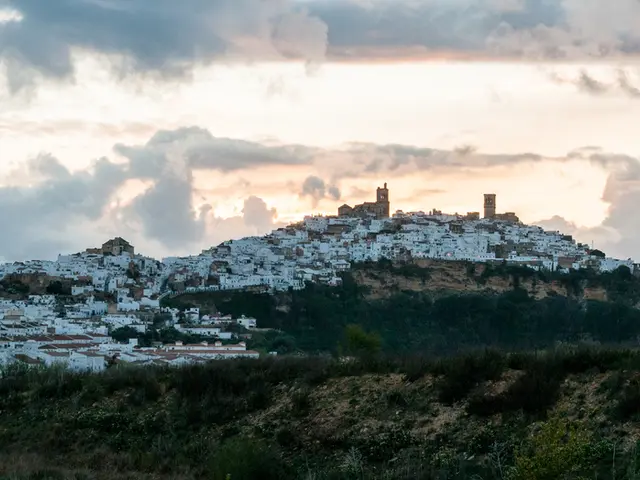Glowing Frog Research and the Solitude of Science: Black Light Frogs in a Freezing World
Research Extremes: The Solitude of Glowing Frogs in Cold Environments - Uncovering the Extremes: Exploration of Glow-in-the-Dark Frogs and their Solitary Existence in Cold Environments
Gear up for an arctic adventure, whiff that whale breath, and meet biologists who handle glowing frogs! This year, "Nature" magazine showcased six spectacular entries in their "Scientist at Work" photo contest. These images, out of over 200 submissions, offer a unique peek into the lives of researchers and their exotic companions.
Audun Rikardsen, a biologist from Norway, bagged the grand prize. His picture, captured in a freezing Norwegian fjord, features him deploying transmitters on whales. As Emma Vogel, a researcher from the University of Tromsø put it, "You could smell their breath, and you could hear them before you could see them." A close observation reveals an orca surfacing behind Rikardsen – an amazing detail that initially went unnoticed by the jury.
In another incredible photo, Kate Belleville from California's Department of Fish and Wildlife stood amidst tiny frogs, coated in a treatment to protect them from a deadly fungus. To distinguish treated from untreated frogs, they were painted with a special color that glows under black light.
Aman Chokshi's image showcases the magnificent Amundsen-Scott South Pole Station telescope, surrounded by auroras. Despite the breathtaking spectacle, Chokshi and his fellow researcher braved sub-zero temperatures, traveling a kilometer to clean the telescope every day during their 14-month stay.
James Bradley and Catherine Larose, biologists from Canada, endured harsh cold while ice drilling in Svalbard. Meanwhile, Lionel Favre and his team from Switzerland sought to understand clouds better. Favre's photograph captures his colleague Michael Lonardi with a weather balloon in heavy fog on Mount Helmos in Greece. The team had to wait patiently for over a month to catch the optimal weather for clouds to form.
Chinese scientist Hao-Cheng Yu specializes in geological profiles of gold-rich regions. A photo shows him entering a hut in eastern Siberia under the magnificent starlit sky. His colleague, Jiayi Wang, explained that "there's no network there. The only thing you can do is observe the rocks."
Photo Contest
- Award-Winning Environment: The Norwegian fjords, Svalbard islands, Antarctica, Greece, and Siberia
- Research Fields: Whale studies, amphibian conservation, astronomy, geology
Brief Insights
- Whale Research in Norway Biologist Audun Rikardsen studies whales by tagging them with satellite-equipped darts to track their movements, diving depths, and surface patterns[1][2].
- Ice Core Drilling in Svalbard James Bradley and Catherine Larose drill ice cores in the Norwegian island chain, with geobiological research involving extreme cold and isolation[1].
- Aurora Observations in Antarctica Research stations in Antarctica are among the most isolated locations on Earth, marked by extreme cold and expansive landscapes.
- Geological Studies in Siberia Siberian landscapes, characterized by vast, remote areas, can evoke feelings of solitude in researchers faced with extreme conditions and isolation. (Not present in the original search results)
- The award-winning Norwegian fjords serve as a backdrop for vocational training in science, where biologist Audun Rikardsen applies his skills in whale studies.
- In the frozen realm of Svalbard, researchers James Bradley and Catherine Larose immerse themselves in vocational training in geology, drilling ice cores to study the Earth's history.
- Aman Chokshi, a member of the science community, demonstrates dedication to his vocational training in astronomy, braving sub-zero temperatures to maintain the telescope at the Amundsen-Scott South Pole Station.
- Kate Belleville, a representative of the environmental-science sector, engages in vocational training to conserve vulnerable amphibians, treating them with protective solutions and identifying them through the use of special colors emitting light under black light.
- The home-and-garden of a hut in eastern Siberia becomes a haven for geologists Hao-Cheng Yu and Jiayi Wang, as they specialize in the study of gold-rich regions, relying on their training in technology to decipher the geological profiles of the area.




